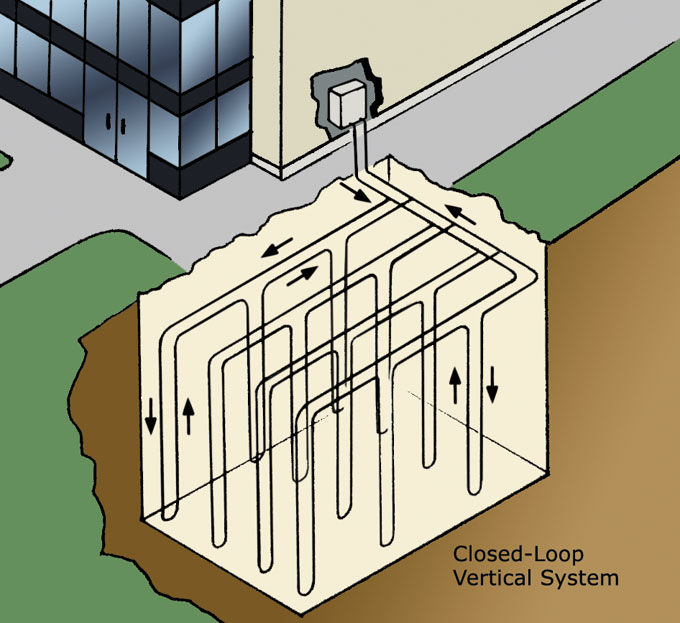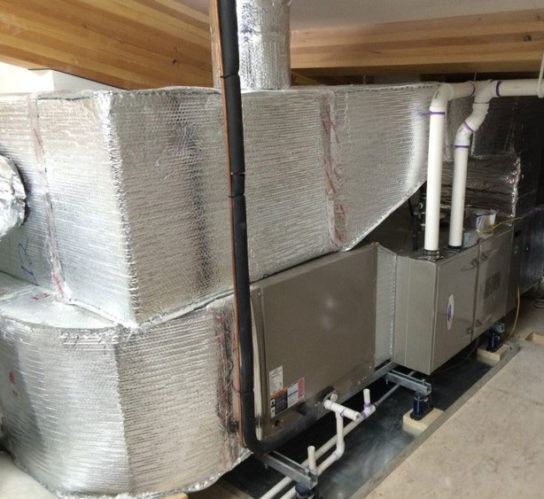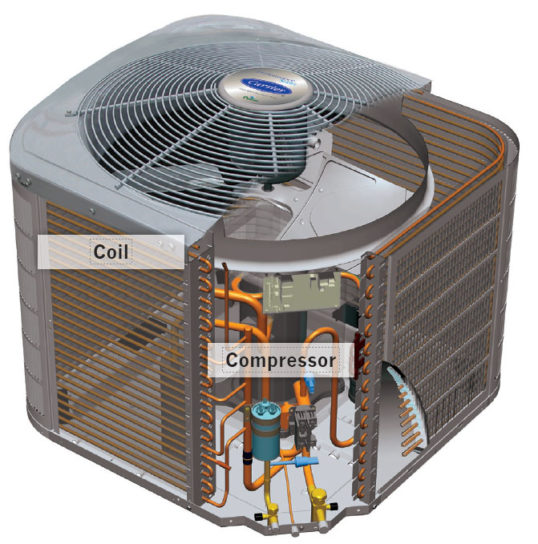Building electrification refers to the use of electric technologies to supply the comforts of a modern building instead of combustion-fueled technologies. An electrified building typically uses electric heat pumps for space heating, cooling, and domestic hot water, as well as electric or induction stoves for cooking. Every major end use for fossil fuels in buildings is ready to be electrified using currently available technologies.
Electrification supports the long-term goal of building decarbonization. As the electricity grid becomes greener and cleaner, designing and constructing buildings to harmonize with the grid will reduce overall greenhouse gas emissions.
Heat pumps play a major role in building electrification. Heat pump technologies use energy in highly efficient ways, saving building owners money.
Heat pumps are basically air conditioners that can be run in reverse to provide heating as well as cooling. Air conditioners make a space cooler by extracting heat from it and releasing the heat in a warmer place utilizing a refrigerant, a fluid that changes from a liquid to a gas at ambient temperatures. After absorbing heat, the gas moves through a mechanical compressor that squeezes the heat back out.
Electric resistance heat is 100% efficient at converting electricity into heat, providing at least two to three units of energy for every one unit of energy consumed.
The annual “coefficient of performance” (COP) of a system is the relative measure of how much energy is delivered compared to how much energy is used. Most air source heat pump systems have an average annual COP of over 2.5. This means that the system is 250% efficient. Most GSHP systems have a COP of over 3.5, or 350% efficiency. The best fossil fuel heating systems range from 80-95% efficient.
Ground source heat pumps (GSHP) extract energy from the ground by tapping the relatively constant temperature of the earth below the surface and using it as a heat sink to provide energy-efficient heating in the winter and cooling in the summer. Ground-source heat pumps have great environmental advantages over other heating and cooling systems.
By releasing building heat into the cool earth, rather than into hot outdoor air, GSHPs cool more efficiently than air conditioners or air-source heat pumps. They provide heat by using the same principle in reverse—drawing heat from the relatively warm earth, rather than from cold outdoor air.

Air Source Heat Pumps (ASHP) extract heat (energy) from the outside air when heating is needed and discharge heat to the outside air when cooling is needed. Air Source Heat Pump systems are available in many sizes and form factors, including small and large ducted systems as well as small ductless “mini splits” systems. In all cases the compressor system is located outside the building.
The initial GSHP system’s cost is higher than an ASHP system. System efficiencies, however, are also higher, and the equipment lasts longer. There are also significant utility incentives in NYS, as well as a federal investment tax credit for private development projects that use GSHP systems.
We can easily future proof the buildings we design, plan and build, to save money and carbon now and in the future. Using all electric space conditioning systems is the best way to make our buildings energy and cost efficient.
###
Find an extended version of this article here on the Alfandre Architecture website.
This article by architect Rick Alfandre originally appeared on page 42-43 of the Summer 2021 issue of On The Level, the publication of the Construction Contractors’ Association.



